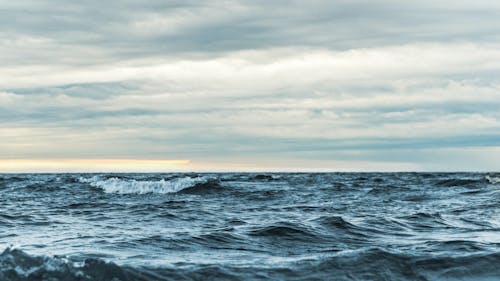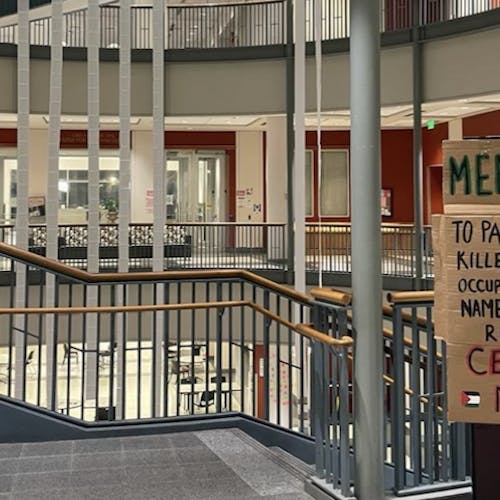RUCOOL researchers reflect on 30 years of gliders, climate science, squid attacks

This October marks the 30th year of oceanography and climate science research spearheaded by the Rutgers Center for Ocean Observing Leadership (RUCOOL), according to a press release.
RUCOOL uses battery-operated robotic ocean gliders to collect and track data. The data received from these devices can be used to develop models about storms and ocean activity.
Technical director of RUCOOL Michael Crowley spoke about the center's 38 gliders and their unique features.
He said the glider's initial weight is balanced to match the weight of the water around it when submerged. Once in the water, the gliders draw and release water to sink and rise, respectively.
Crowley said the extraction and release of water allow the gliders to operate without using excessive energy. He said conserving energy allows the gliders to travel for extended periods of up to nine months.
Each glider can track conductivity, temperature and depth. Crowley said that conductivity is the speed at which electricity travels through a given body of water and indicates how much salt is in the water.
Over time, Rutgers has worked with other research institutes to expand upon what these gilders can track, he said. Newer sensors allow them to track ocean and wave heights, oxygen levels, the speed of currents and the presence of tiny organisms like zooplankton and phytoplankton.
Crowley said the capacity of these gliders has grown since they were created by Douglas C. Webb, founder of Teledyne Webb Research, in the 1990s. The first glider was launched into the ocean from the University’s Marine Field Station in 1999, he said.
“That first (glider) just went up and down a couple of times,” he said. “But then 10 years later, it crossed the Atlantic, so they've made great strides in their technology over the last 20 years.”
Crowley said the gliders have been party to interesting events over the years, including attacks by marine life. For example, he mentioned an incident where a giant squid wrapped itself around a glider and proceeded to bite at it for hours before releasing it.
Over time, researchers have used the data collected by these gliders for various purposes, such as researching ocean acidification, preventing improper fishing tactics and predicting hurricanes and storms, most notably Hurricanes Irene and Sandy, Crowley said.
Travis Miles, an assistant professor in the Department of Marine and Coastal Sciences and an assistant research professor at RUCOOL, said that this year marks a decade since Hurricane Sandy.
During the storm, he said he witnessed a deployed glider collect data about ocean changes in real time but was unable to use that data to create a forecast for the storm.
“We have this really amazing data set, and we understand how the storm’s going to behave but not really having the ability to translate that information to protecting people,” he said.
Miles said that since Hurricane Sandy, RUCOOL has collaborated with the National Weather Service agency to better incorporate glider technology and data into storm forecasting.
He said currently, RUCOOL sends glider data to national climate and weather institutions as soon as possible so it can be used for modeling. Additionally, the center has used gliders to supplement research projects on climate change.
Miles mentioned a project spearheaded by Oscar Schofield, a distinguished professor in the Department of Marine and Coastal Sciences, which uses gliders and other oceanographic technology to track the effects of climate change on the Antarctic Western Peninsula.
He also said the gliders track how heat moves through the ocean, specifically from the tropical Atlantic. Traditionally, ocean heat has been measured through ships, but gliders have proven to be a less expensive and more efficient option.
“(Ocean temperatures are) the conveyor belt of heat that basically controls our weather — it controls our climate,” he said. “So we're looking at that on a pretty regular basis and we're building up this data set that we share publicly with scientists all over the world to continue to look at this.”
Crowley said RUCOOL’s deployment of gliders has allowed the center to observe climate data over a long period of time. He said the data has shown that climate change impacts the world more quickly toward the northern and southern ends of the globe.
Crowley said one of the center’s most up-and-coming research projects is analyzing the effects of wind turbines in New Jersey and New York on the local environment. He said over the next 13 years, these two states will install approximately 1,000 offshore wind turbines.
The gliders will track how these turbines will impact the surrounding ecosystem by collecting data before, during and after their installation, Crowley said.
While RUCOOL’s activities may sound like they are focused on operational research, Miles said the center’s University roots allow students to engage with oceanography within an academic space.
He said both undergraduate and graduate students have been able to engage with glider technology, without even having to leave the classroom. The gliders allow the center to help students engage with oceanographic research with real-time data, he said.
“Doing this work, the way I always talk about it is, we want to train the next generation of climate scientists, oceanographers,” Miles said. “I think the educational part of this has been really exciting, and it's a great reason to be doing this at Rutgers as well as with collaborators and other universities across the world.”



